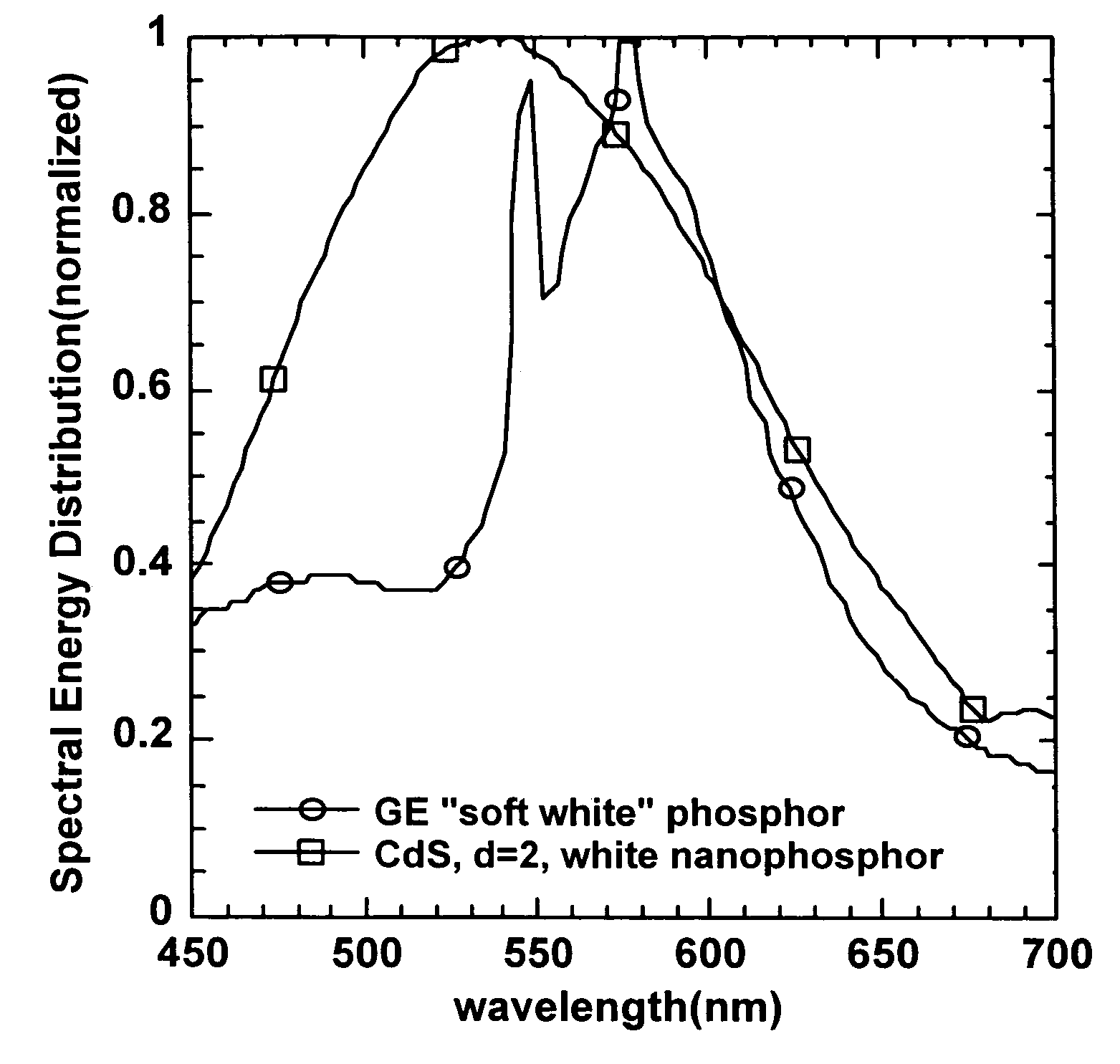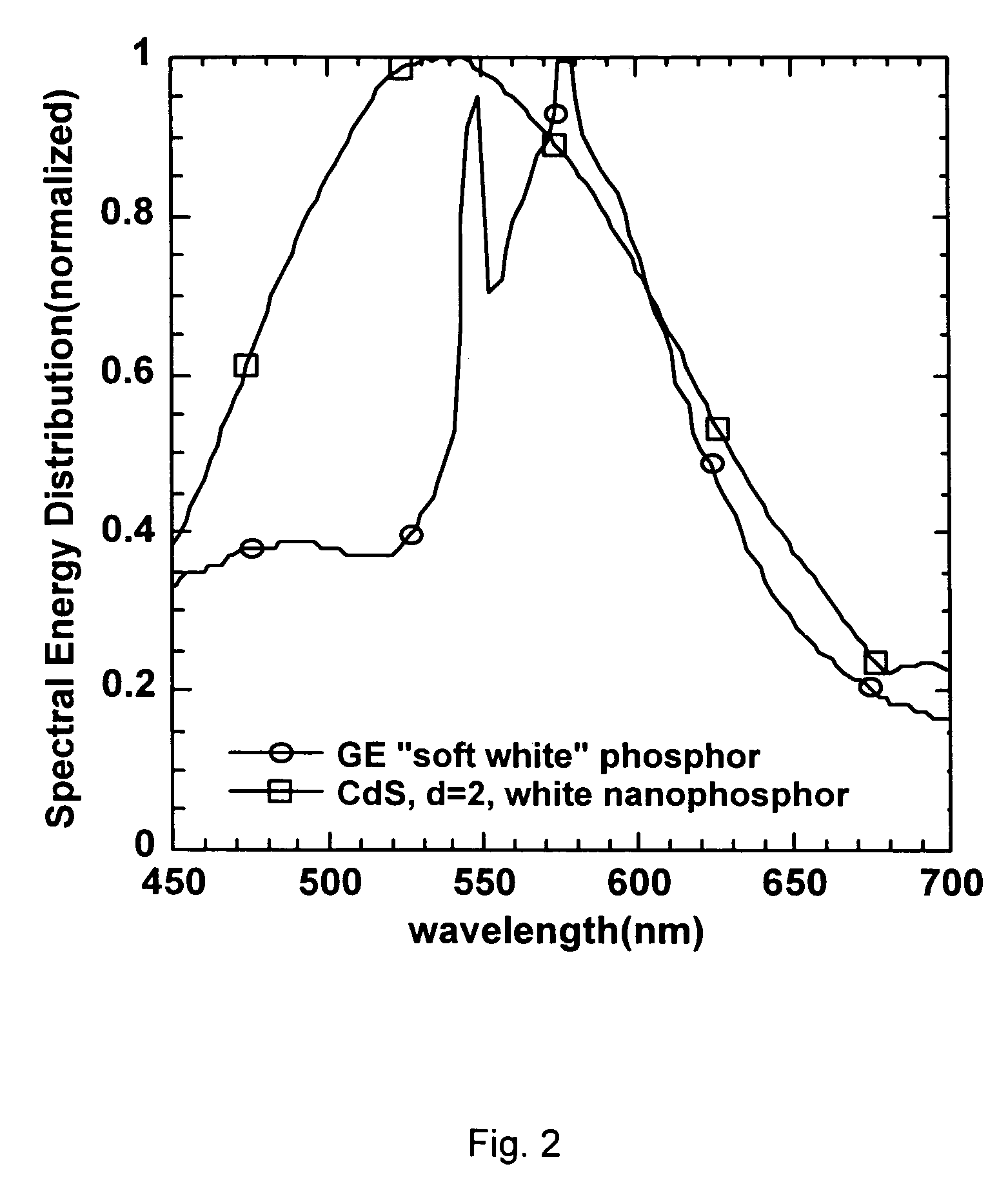Nanocluster-based white-light-emitting material employing surface tuning
a technology of surface tuning and nanocrystals, applied in the direction of mercury compounds, energy-saving lighting, sustainable buildings, etc., can solve the problems of loss of light extraction and overall efficiency, phosphor types, and lowering the overall efficiency
- Summary
- Abstract
- Description
- Claims
- Application Information
AI Technical Summary
Problems solved by technology
Method used
Image
Examples
Embodiment Construction
[0031]This invention comprises a method for making a nanocrystal-based material capable of emitting light over a sufficiently broad spectral range to appear white. This is accomplished by modifying the surface of a semiconductor nanocrystal after it is synthesized. To improve performance, the surface-modified semiconductor nanocrystal, or nanoparticle, can undergo surface reconstruction over time to increase the number of wavelengths at which emission occurs. The terms nanocrystal and nanocluster are both employed to describe crystalline nanoparticles that are less than 20 nm in critical dimension, where the critical dimension for a spheroidal nanocrystal is essentially the nanocrystal diameter, d. Nanocrystals of nonspheroidal shape but with the largest dimension less than 20 nm satisfy this condition as well. Nanocrystals of this dimensional range exhibit strong quantum confinement behavior when they are composed of materials whose exciton confinement or Bohr radius, rB is such th...
PUM
| Property | Measurement | Unit |
|---|---|---|
| temperature | aaaaa | aaaaa |
| temperature | aaaaa | aaaaa |
| size | aaaaa | aaaaa |
Abstract
Description
Claims
Application Information
 Login to View More
Login to View More - R&D
- Intellectual Property
- Life Sciences
- Materials
- Tech Scout
- Unparalleled Data Quality
- Higher Quality Content
- 60% Fewer Hallucinations
Browse by: Latest US Patents, China's latest patents, Technical Efficacy Thesaurus, Application Domain, Technology Topic, Popular Technical Reports.
© 2025 PatSnap. All rights reserved.Legal|Privacy policy|Modern Slavery Act Transparency Statement|Sitemap|About US| Contact US: help@patsnap.com



